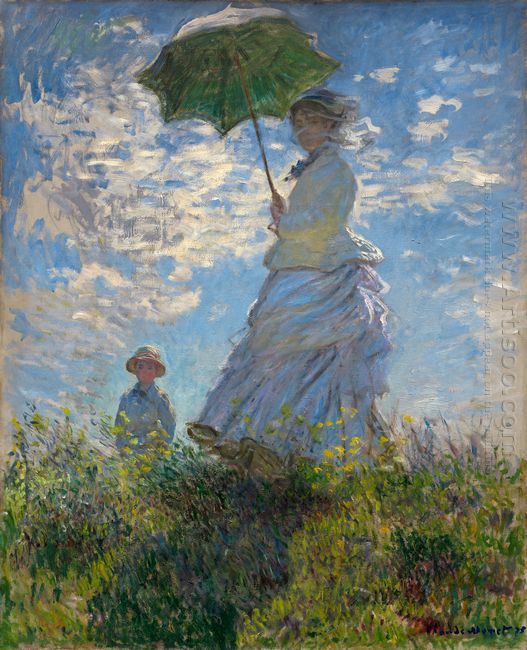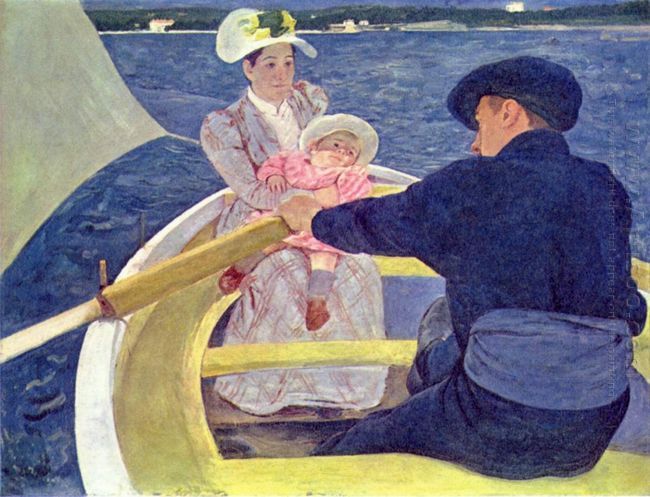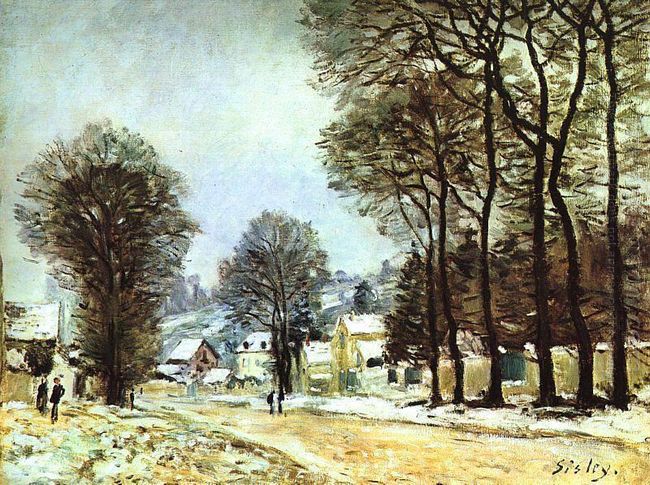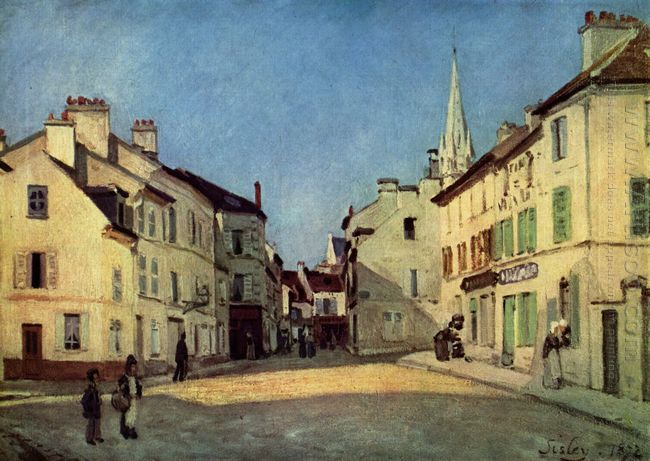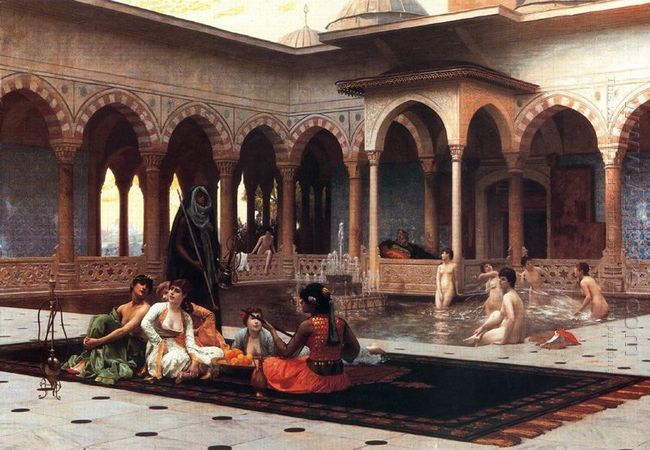Woman with a Parasol—Madame Monet and Her son belongs to a series Monet paintings during 1875 to 1876. As a famous French landscape painter and a representative of Impression, Monet paid much attention to the landscape and light effect in this painting. Woman with a Parasol was one of his early period works, but has already showed his wonderful skills on landscape. It is now in the National Gallery of Art, in Washington D.C.
The Woman with a Parasol was painted outdoors. The woman on the center of the painting is Monet's wife Camille. Monet intended to create a feeling of casual family outing. It was a sunny morning, and the family was going for a stroll on the lawn. Camille is dressed in a voluminous, white dress, with a veiled hat, carrying a parasol. She lightly turns his body and her dress is slightly twisted with her motion, presenting a dynamic scene. The bright sunlight shines from the above on Camille's parasol, shadowing on Camille's face and her upper body. The grasses and light-yellow flowers are swinging in the breeze, as if the flavor of earth and flower can be smelled.
Rather than human character, this painting mainly concentrates on the scenery. Therefore, Monet blurred the face of Camille and Jean, only the eyes of them can be recognized. The color in this painting is simple, mainly with blue, green and gray, contributing to a bright and warn atmosphere. The shadows are mixed with colors rather than black, making the picture more natural, which is a characteristic of Monet’s works. The painting was painted from the low angle view, leaving an impression that Camille seems to catch a glimpse of someone looking at her. The little boy Jean, who was eight years old that time, was standing back. The woman, her son and the parasol form a triangle, making a balance effect.

